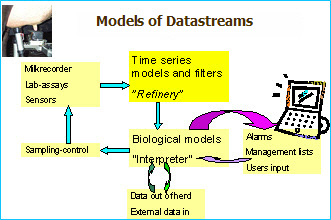



Virtual Vet: Automated Dairy Farming
The automatic monitoring of health and performance in dairy herds has long been an idea assigned to the future, but Peter Løvendahl, a researcher in genetics and biotechnology at Aarhus Universitet, says that the technology has already arrived. The time to implement it is now upon us, writes Adam Anson, CattleSite reporter.The promise of automated dairy systems seems almost too good to be true. They can offer in depth health analysis, forecast fertility cycles, improve the prospect of reproductive success and even model potential problems long before they have happened. It is said that all of this can be achieved and managed automatically; the sampling, the analysis and the feedback. All the parlour manager has to do is turn on the central computer.
The question is no longer if this technology will occur, but when and why? Mr Løvendahl attended the 42nd University of Nottingham Feed Conference to help answer these questions, but more importantly he explained how these technologies can be applied to a commercial farming system and how they actually work.
"Farmers used to be afraid of computers. Now they've got them in the barn" he said. "Is it time now. I would say yes."
The system he wanted to talk through was the HerdNavigator, which has just been introduced commercially as an on-farm management system, but that he has been researching for some time. The system manages this automatic monitoring of health and performance based on indicators given in milk.
"The basis for good dairy herd management is reliable information about each cow's current production and health combined with a systematic way of handling the data" he said. According to him, this system is unique as it is integrating information about production, health and reproduction, and has an exchange of data with existing advisory systems and databases.
Four main biological elements are addressed in HerdNavigator: Health as mastitis through LDH measurements; Metabolism as ketosis through BOHB measurements; Reproduction through progesterone measurements; and Protein balance through urea concentrations. Each has a chemical sensor and has a sub-module in the time series models as well as in the bio-models (Fig. 1).

Time series analysis and filtering of data
According to Mr Løvendahl, a mixture model approach was taken in order to obtain probabilities for the state of the cow at the latest time point when new data had arrived from the sensor in question. This is obtained by assuming that the measured trait develops slowly over time. The "normal" then becomes a "steady-state" curve with no or slow change in concentration, except for the basic noise on measurements.
"When real changes occur these can either be manifest as a change in level or as a change in the slope of the curve", he said. Occasionally abrupt changes might occur which are the result of faulty measurements producing statistical "outliers". Each of the four states has its own model (M1 - M4), and probabilities for a measurement as belonging to a specific model is calculated (Prob1 - Prob4). When a new datapoint has been recorded, previous points are re-calculated using "back-smoothing".
Mr Løvendahl said that the system works by telling you "how things are today and how things were yesterday, in order to predict how things will be tomorrow." So the more data it has the smoother back dating will become - consequently, the greater accuracy the predictions will obtain.
Biological models
The biological models combine the probabilities from the time series models with other data (e.g. lactation state and previous events) in a biological framework. The results from the model are modified probabilities for example giving "degree of infection" or probabilities for various reproductive states.
Mastitis model. Mastitis is considered the most important health problem in dairy cows. The milk content of LDH is used as indicator of infection.The model is able to detect mastitis about 3 days before it would otherwise be detected by the farmer.
Reproduction model. Using frequent progesterone determinations, the cow can change from initially "anoestrus" to "cyclic, in heat, pregnant, or into prolonged luteal or follicular phases. The method is similar to the "gold standard" used in other studies and is therefore unsurpassed in accuracy. Combination with activity measurements is possible and genetic applications have been outlined.
Ketosis model. Clinical ketosis states were rarely detected in the research herd but sub-clinical states are more abundant. Sub-clinical ketosis may impact on yield and studies are ongoing.
Urea model. Environmental issues are raised about the use of surplus protein but cow needs must still be met to support high yields. This model works mostly at group level.
Estimates of benefit
Mr Løvendahl said that the commercial interest in developing the HerdNavigator stems from a belief that health and reproduction can be effectively improved in herds implementing the system. "Direct assessment of economic benefits was initially not possible but was estimated using SimHerd software." SimHerd provides stochastic simulations of herd events over time and is therefore able to determine the average long term effects as well as variance on effects.
So far there has been no commercial test data on HerdNavigator, but there is no doubt that the implications of such systems could be far reaching in the industry - not only on how a farm works, but also on employment, safety and the entire role of dairy farmers themselves.


